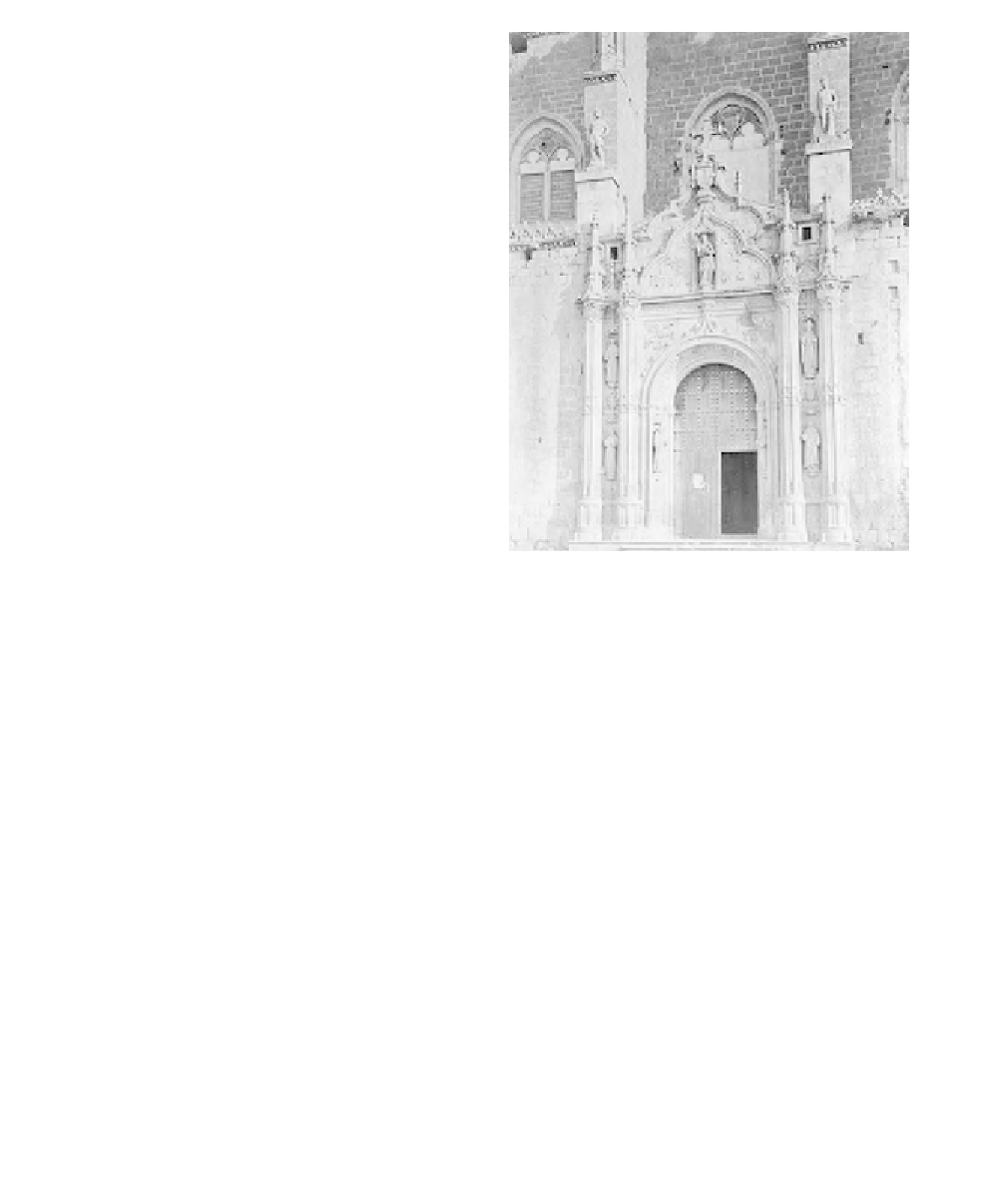Travel Reference
In-Depth Information
during the Middle Ages, and the archbishop
of Toledo is still primate of Spain. His cathe-
dral and many other churches rise above
the city, including a converted mosque and
synagogue that recall the era of intercom-
munal tranquillity among the city's inhabit-
ants. Shops and small factories reflect
traditional products of Toledo, including the
sword blades of such high quality as to earn
world renown. Rising above all, the Alca-
zar, or citadel, built by the Moors rears its
impregnable walls and towers.
Even though F
ERDINAND
V and I
SABELLA
I moved their customary residence to V
AL
-
LADOLID
, their grandson, C
HARLES
I, chose
to spend most of his reign (1516-56) at
Toledo. Moved as much by its symbolic
air of dominance as by nostalgia, he lent
the aura of his title as Holy Roman
Emperor to a city already reflecting centu-
ries of majesty.
In later days Toledo would be known for
the rigor of its prelates, the genius of its art-
ists (E
L
G
RECO
above all), and the air of
diminished grandeur so evident to visitors.
In 1936, at the outbreak of the S
PANISH
CIVIL
WAR
, Toledo once again commanded the
attention of all Spain as Republican forces
besieged the Alcazar, where army rebels
held out in support of General F
RANCISCO
F
RANCO
's insurgency. The siege of the A
LCA
-
ZAR
OF
T
OLEDO
became the central drama of
the war's opening months, especially
because the besiegers held hostage the
young son of Colonel Moscardo, the cita-
del's commander. Moscardo refused to sur-
render the Alcazar and, when allowed to
speak to the youth by telephone, the father
urged him to “die like a good Spaniard” and
received an equally brave response from his
son. Such moments evoked, for both sides
in the civil war, the whole history of gran-
Entrance of San Juan de los Reyes Cathedral in Toledo
(Library of Congress)
deur and misery that constituted their
national experience and was enshrined
within Toledo's walls.
Tordesillas, Treaty of
(1494)
This fundamental allocation between Spain
and Portugal of jurisdiction in the newly
discovered lands and trade routes of the
world was concluded in 1494. Competing
claims between these two countries had
their origins in the expansionist policies of
C
ASTILE
and Portugal dating back to the
14th century. Both kingdoms had designs
on trade routes and non-Christian lands
lying in or across the Atlantic Ocean or in
North Africa and the sub-Saharan region of

Search WWH ::

Custom Search